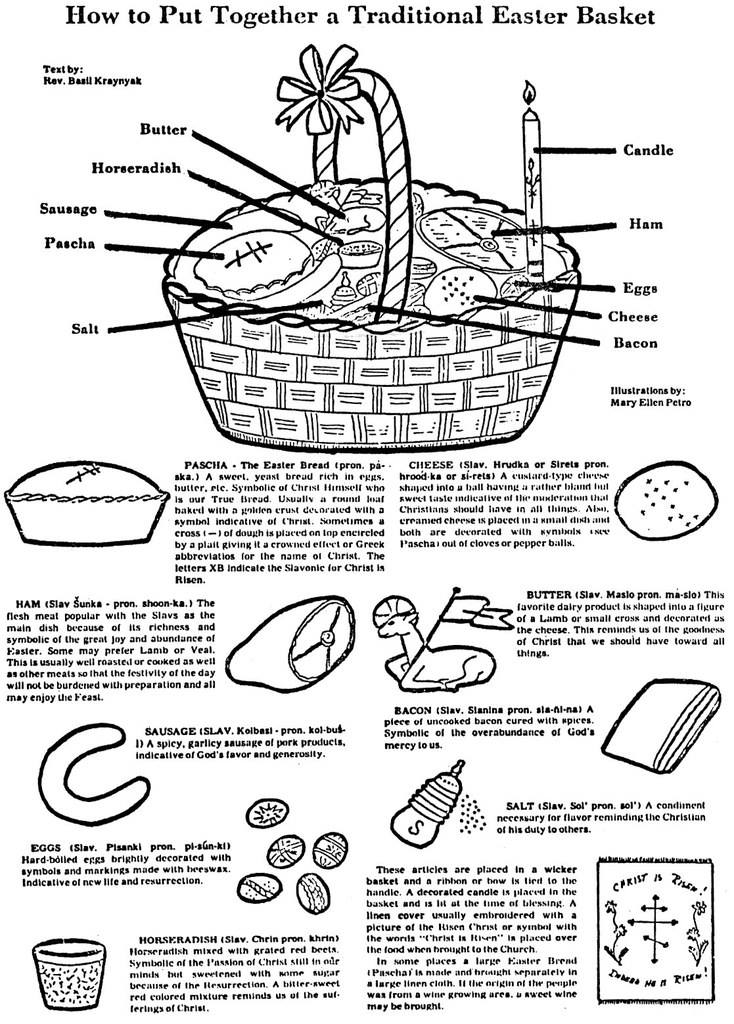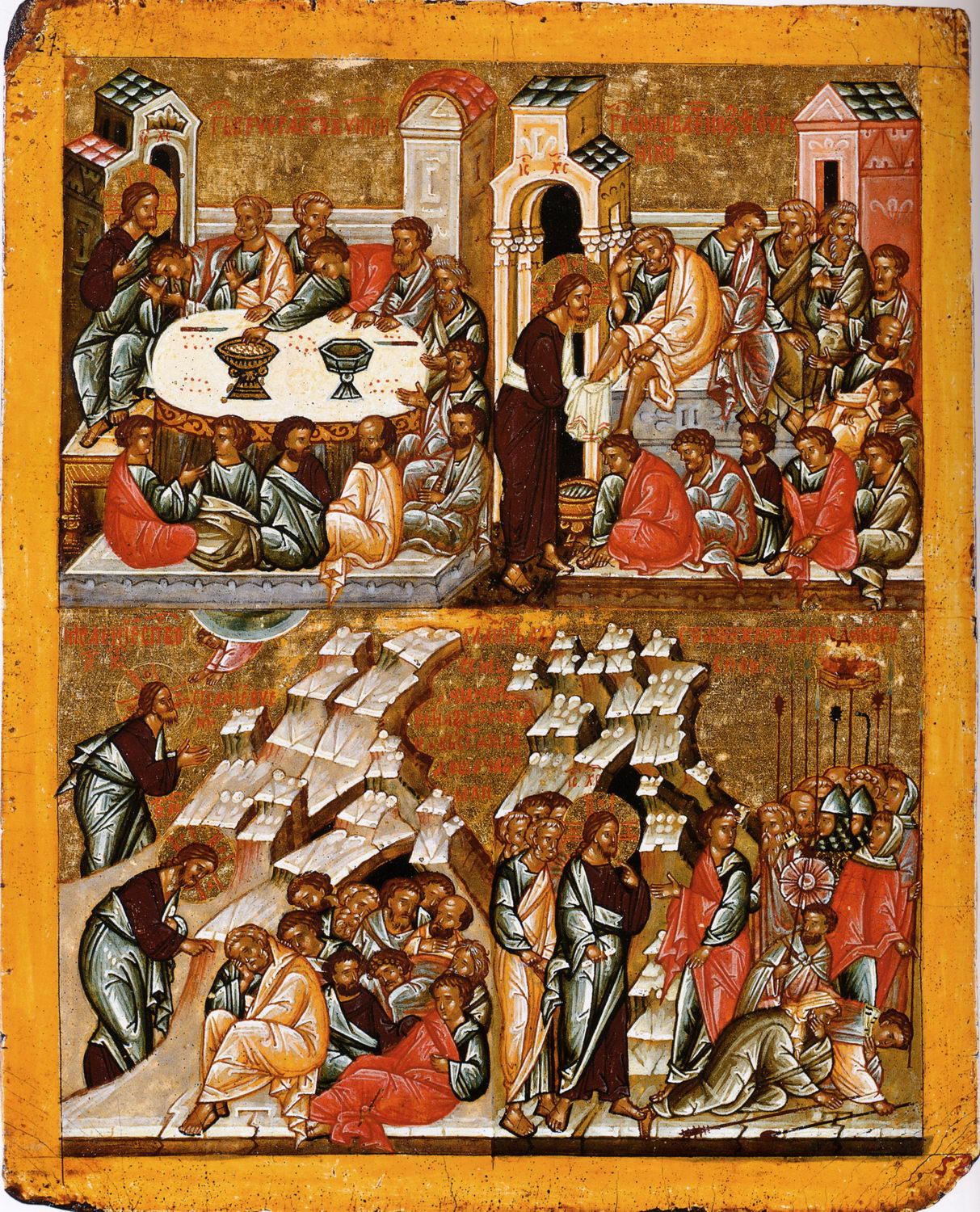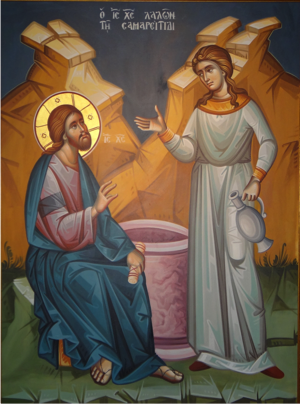The Synaxarion discerns two themes in Great and Holy Monday:
1) A comparison between Jesus and Joseph, the son of Jacob:
“[Jesus] was sold by a disciple for thirty pieces of silver and was imprisoned in the dark and gloomy pit of the grave, whence He broke out by His own power, triumphing over Egypt, that is, over every sin. In His might He conquered it, and He reigns over all the world. In His love for mankind He redeemed us by a distribution of grain, inasmuch as He gave Himself up for us and He feeds us with Heavenly Bread, His own Life-bearing Flesh. For this reason, Joseph the All-comely is brought to mind at this time.”
 2) the cursing of the fig tree.
2) the cursing of the fig tree.
The Synaxarion said this was a cursing of the Jewish people, who did not bring forth the expected fruit. The gospel itself sees it as the power of prayer: ““Amen, I say to you, if you have faith and do not waver, not only will you do what has been done to the fig tree, but even if you say to this mountain, ‘Be lifted up and thrown into the sea,’ it will be done. Whatever you ask for in prayer with faith, you will receive. (Matthew 21:21-22)”
Many of the texts of Holy Week can be interpreted in an anti-Jewish sense. The Synaxarion is more explicitly so. I think it is a problem. But did the Church formally condone persecution of the Jews. I don’t think so, but some pretty strong texts have led weak-minded and hateful people to interpret them so, causing a series of pogroms and culminating in the Nazi holocaust. In 1998 Pope St. John Paul II wrote: “We deeply regret the errors and failures of those sons and daughters of the Church. We make our own what is said in the Second Vatican Council’s declaration Nostra Aetate, which unequivocally affirms: ‘The Church . . . mindful of her common patrimony with the Jewish and motivated by the Gospel’s spiritual love and by no political considerations, deplores the hatred, persecutions, and displays of anti-Semitism directed against Jews at any time and from any source’”
Conservative priests have upbraided me: the reality is that those who condemned Jesus were Jews, and we should not deny the historical truth. Yes, it is real that the mob that cried out “Crucify him,” were Jews, but then the apostles were Jews, the women at the foot of the cross were Jews and Jesus was a Jew.” He was not condemned by the Jewish nation, but by the pharisaical high priest (and pharisaism is an endemic disease of clerics of all religions) and by the mob misled by their leaders, and mobs are still with us. Hatred and suspicion of the other (racism) is a human disease. I remember when I was a boy, family gatherings almost always degenerated into hate sessions of “nig***s” and Jews. Racism continues to be an infection among Slavic peoples (and indeed any white race, and probably any human race, hatred of the “Other”) but it is an evil to be rooted out. We’re not doing a great job of that. At Jesus’ trial, it is recorded that the mob cried out, “His blood be upon us and our children.” This has been conceived as curse, but was it really a blessing? For we have all received redemption through drinking of the blood of the new covenant.
 The priestly blessing of Easter foods is a venerable and beautiful tradition of the Kievan Church (not seen often among the Greeks and Melkites). The Polish and other Eastern Europeans bring their Easter foods to church to be blessed.
The priestly blessing of Easter foods is a venerable and beautiful tradition of the Kievan Church (not seen often among the Greeks and Melkites). The Polish and other Eastern Europeans bring their Easter foods to church to be blessed. Today we celebrate three mysteries of the church.
Today we celebrate three mysteries of the church. The Matins gospel proclaims that Christ has reached the hour of his glory. His glory is his infinite divine love for the human race, by which he tramples death by death:
The Matins gospel proclaims that Christ has reached the hour of his glory. His glory is his infinite divine love for the human race, by which he tramples death by death: 2) the cursing of the fig tree.
2) the cursing of the fig tree.